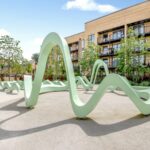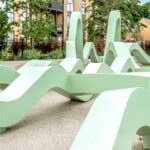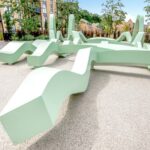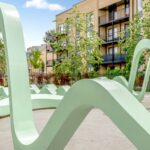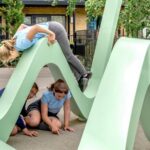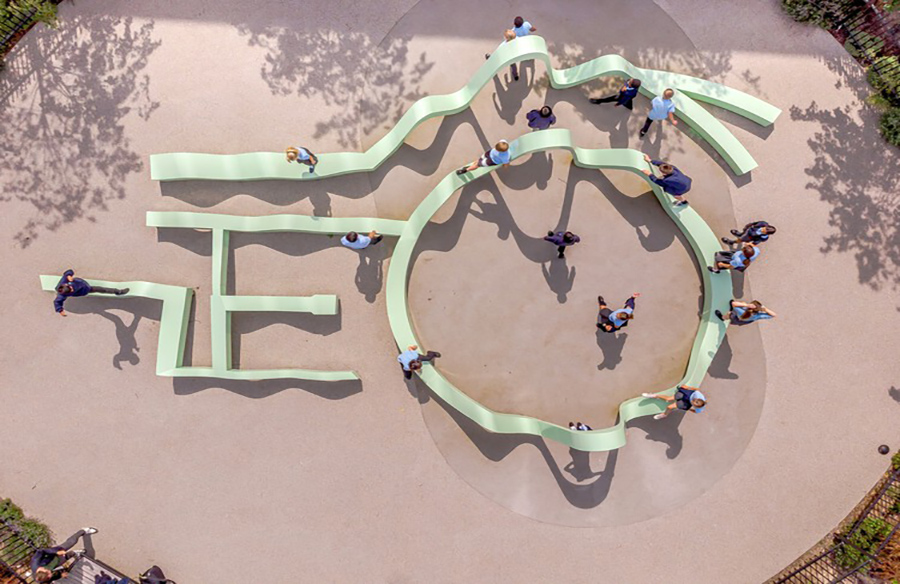
Integrating Art and Interaction
Situated within Keepmoat’s Cable Wharf development in Northfleet, United Kingdom, the “Born to be Wild” installation by NEON offers a unique opportunity for public engagement. Designed to encourage interaction, visitors are invited to climb, sit on, and walk through the sculpture, fostering a dynamic relationship between art and audience.

Heritage Preservation and Artistic Innovation
Rooted in history, the installation is strategically placed above the buried remains of the Grade II listed bear pit, a prominent feature of the Victorian gardens that once graced the site. To honor this heritage, NEON drew inspiration from the archaeological drawings of the bear pit, integrating its lines into the sculpture’s outline. The resulting form, reminiscent of tree branches—a natural habitat for bears—encourages playful interaction and contemplation of the human-animal relationship.

Collaborative Design Process
In a collaborative effort with Key Stage 2 children from Rosherville Church of England Primary Academy, NEON solicited feedback on the artwork’s design and functionality. Through workshops and online sessions, students provided insights that influenced the sculpture’s final form, resulting in a more curvaceous and engaging structure.

Heritage Strategy and Community Engagement
Part of a broader heritage strategy led by landscape practice ARC, the installation contributes to the preservation and revitalization of Northfleet’s historical landmarks. Complemented by interpretation boards, way-finding markers, and engraved paving, “Born to be Wild” offers residents and visitors alike an immersive experience that celebrates the area’s rich cultural heritage.

Technical Details and Engineering
Measuring 10m x 12m in plan and reaching a maximum height of 2.4m, the installation was meticulously crafted by Steelline in 10 sections assembled onsite. Constructed from 316 stainless steel and coated in marine-grade epoxy paint for durability, the artwork’s shallow foundations were designed to safeguard the underlying bear pit structure. Engineered by Elliot Wood, the installation stands as a testament to both artistic vision and technical precision.









